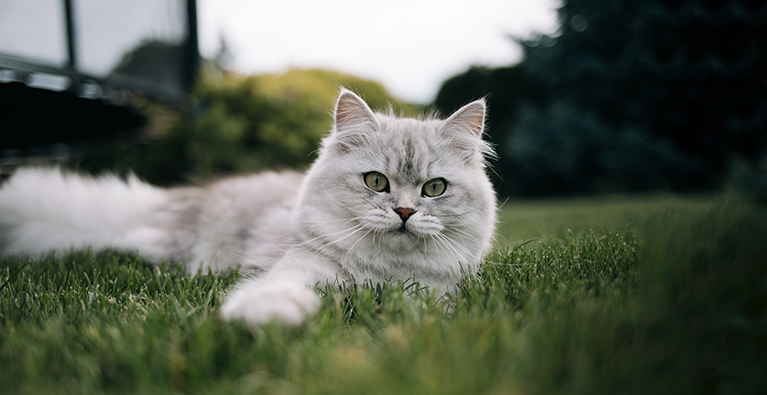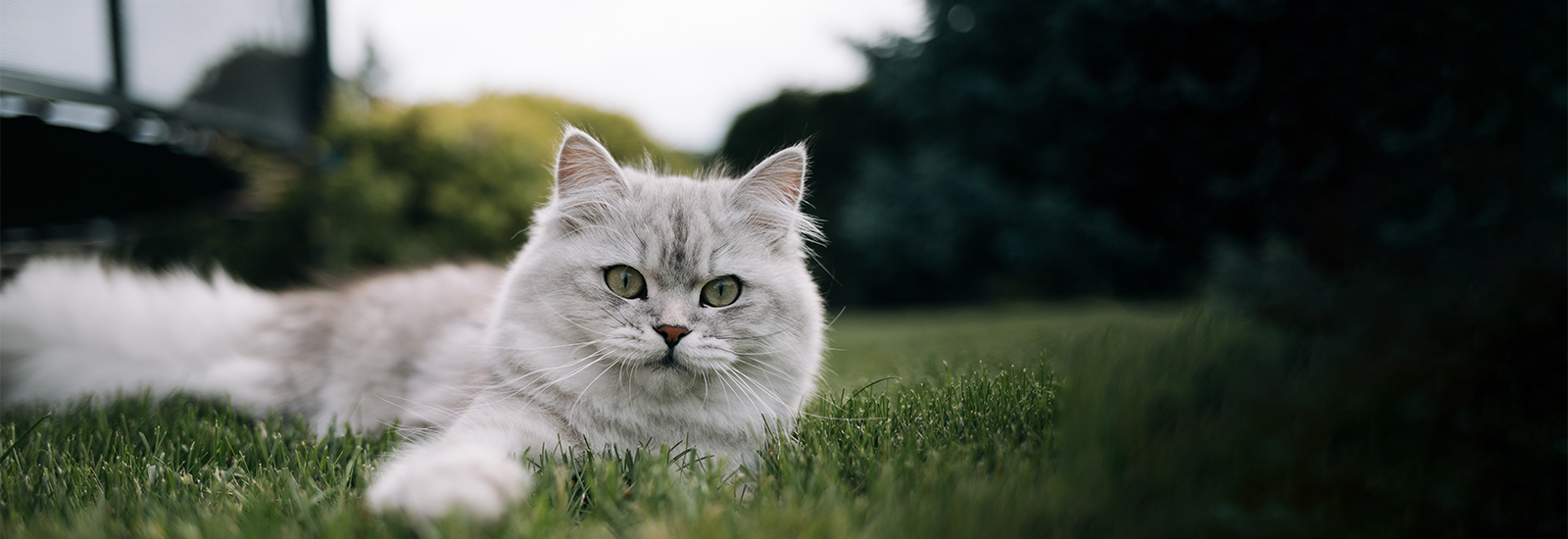British Longhair
The British Longhair evolved from the British Shorthair and has almost exactly the same breed standard. Both are calm, uncomplicated breeds of cat. The only difference is the length of their fur.
Profile of the British Longhair
- Size medium
- Weight female: approx. 4.5 kg, male: approx. 6 kg
- Origin Great Britain
- Build muscular, stocky
- Length of fur plenty of long fur
- Colour of fur varied
- Grooming time-consuming
- Behaviour gentle, calm
- Character easy-going, adaptable
Appearance and character of British Longhair cats
Even the British Shorthair is a really cuddly cat with its luxuriant undercoat. It is, however, surpassed by the British Longhair, which has even more fur. Only on the face is the fur short, and according to the breed standard it should on the rest of the body be semi-long to long. The British Longhair has a beautiful ruff around its neck, a furry tail and a very dense coat. The undercoat is fluffy and gives the coat an impressive volume. Depending on the season, there may be minor changes in length and density.
With the exception of their coat length, British Longhairs and Shorthairs have the same breed standard. Their build is muscular and slightly stocky. The legs and tail are rather short, as are the nose and ears. The eyes, on the other hand, are large and may be green, blue or copper-coloured. Even two different eye colours are allowed in the standard – for example, one eye copper-coloured and the other blue.
The coat colour of the British Longhair is extremely varied. There are over 300 colour varieties – including plain white, creamy red, blue, chocolate and black. Cats with two or three colours are also covered by the breed standard, as are spots, various patterns, and stripes on the legs.
The British Longhair is a relatively calm breed of cat that enjoys a relaxed life. It seeks close contact with its family, loves being cuddled and does not easily become upset. It has an average level of playfulness and is not overly temperamental.
Keeping and caring for a British Longhair
Life with a British Longhair is very pleasant and hassle-free. It is one of the more reserved cat breeds that are neither loud, nor demanding or moody. They like a harmonious atmosphere and want to be looked after properly. They are very affectionate and enjoy a lot of attention. You should therefore make sure that you have plenty of time for cuddling sessions every day. They also love cosy spots, for example one of the lying areas on a cat tree or on the windowsill with a nice view of the world outside. As with their relative the Persian cat, they should not be allowed outdoors. The result would be that they would return home with all kinds of greenery and undergrowth in their fur. Things will be so much easier if you provide your cat with plenty of variety at home. This is best achieved by having a second cat at its side with whom it can play and cuddle. You should also provide your pet with cat toys to keep it physically and mentally stimulated.
The British Longhair requires more grooming than the British Shorthair. It has a fluffy undercoat and semi-long to long fur. The coat is dense, double and in some cases very voluminous. It is therefore advisable to comb through your cat’s fur several times a week with a wide-tooth comb. If you fail to do this, you can expect matting to occur. You can detect these tangles by running your fingers through your pet’s coat and pulling gently on it. Ideally, you should start grooming your little friend in a playful way when it is still a kitten. It is then more likely to see this as something completely normal and you will be able to carry it out later without any problems. This is especially important during the moulting period, when the British Longhair loses large amounts of fur. The more you comb out, the smaller the amount that will be able to float around your home and be swallowed by your cat when it cleans itself.
Nutrition
Whether it’s a kitten, an adult cat or a senior – the food for a British Longhair cat should always be of high quality and tailored to its age. Cats are carnivores by nature, so cat food should always contain a high proportion of meaty ingredients. Sugar, flavour enhancers and artificial colourings and preservatives do not belong in the food.
animonda has the ideal food for every stage of your cat’s life. You can choose between kitten, adult and senior cat food. The products are specially formulated to meet the specific nutritional requirements of the different life stages of cats. This provides the best foundation for your pet to enjoy a long and healthy life.
British Longhair: health
British Longhair cats do not show any abnormalities in terms of hereditary diseases. They are considered a healthy breed of cat. Hopefully this will remain the case, because the breed’s gene pool is rather limited and breeders therefore have to be careful. To minimise the risk, responsible breeders will arrange for all the recommended vaccinations, preliminary examinations and appropriate genetic tests to be carried out. This includes a DNA test for hypertrophic cardiomyopathy (HCM), a common heart disease in cats. In the early stages, this can be treated effectively with medication. It is also advisable to test kittens for polycystic kidney disease (PKD). If a cat is diagnosed with this hereditary disease, it should not be used for breeding.
History and breeding
The British Longhair originated from normal domestic shorthairs. In the 19th century, they were deliberately paired with, among others, Russian Blue and Siamese cats. These resulted in the first changes, which visitors were able to admire at the world’s first cat show in London in 1871. The winner was a blue tabby British Shorthair. This provided the breed with its first surge in popularity. However, the two world wars reduced interest in breeding and also made it increasingly difficult. Because of the lack of suitable animals, breeders occasionally crossed Carthusian and Persian breeds. This resulted in the cats becoming stockier and fluffier. This change in appearance appealed to people. Efforts in this direction were therefore intensified. The result was the British Longhair as we know it today, with its gentle curves and particularly dense coat that stands out from its body.
Although breeding was carried out with the help of Persian cats, the dominant shorthair gene established itself in most of the offspring. Their fur was therefore lush, but not long. Occasionally, however, kittens with long hair were found in a litter. These were removed, neutered and passed on to cat enthusiasts. However, the breeders were repeatedly asked why they were not breeding long-haired kittens, as they were at least as pretty as the short-haired variety. This led to the specific breeding of long-haired cats. For this to be successful, both parents have to carry the longhair gene. In the early days of breeding, these were often a matter of chance, but it is now possible to reliably analyse the genetic code of the cats. As a result, it is now possible to breed purebred cats with guaranteed success.
Cat organisations around the world do not agree on whether the British Longhair should be considered a breed in its own right or whether it simply has a different type of coat. In 2017, the European governing body, FIFe, decided to recognise the British Longhair as a separate breed.
You may also like this

British Shorthair
The breed originated from the domestic cat, it is calm and…
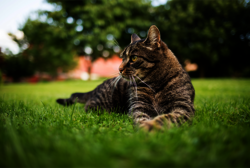
European Shorthair
The domestic cats also have a lot to offer
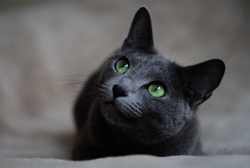
Russian Blue
An affectionate but also stubborn breed of cat
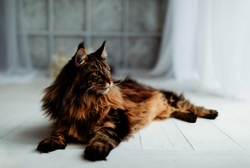
Maine Coon
The breed is one of the largest and most popular cat breeds in…
